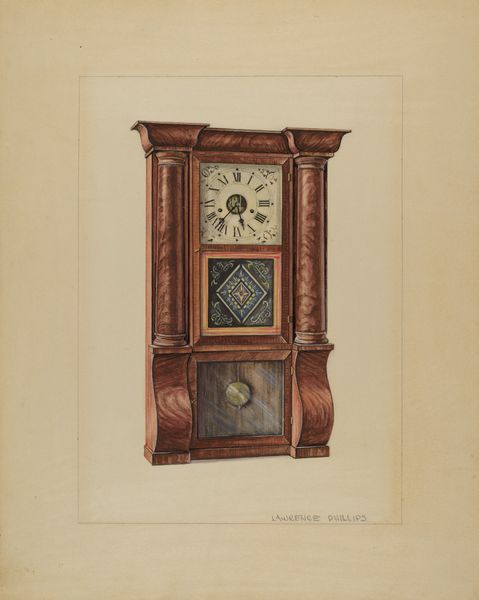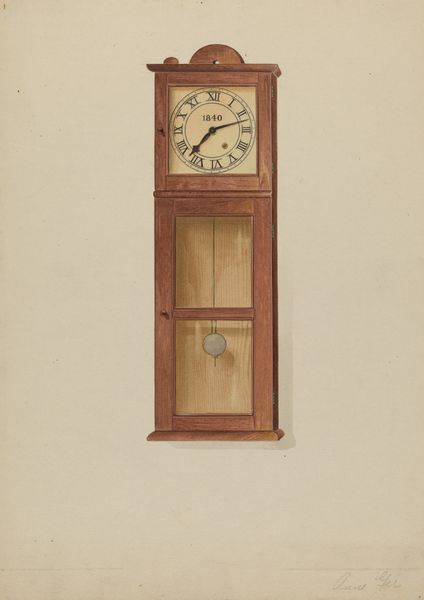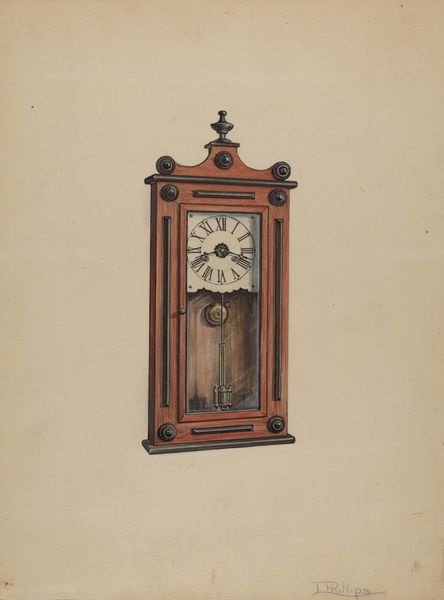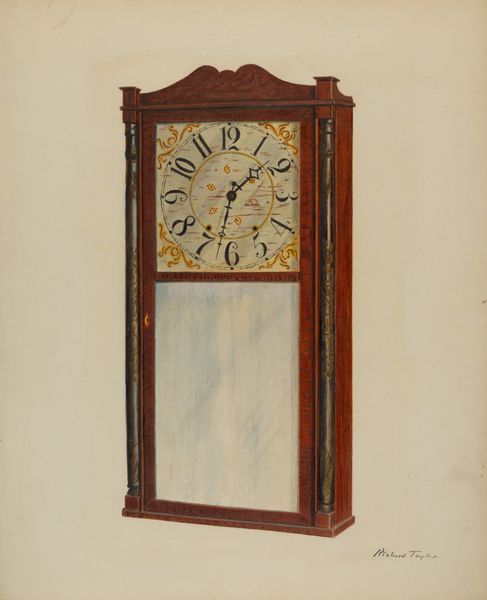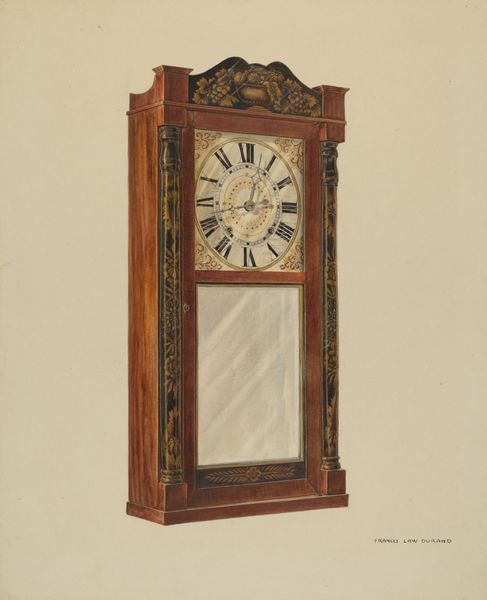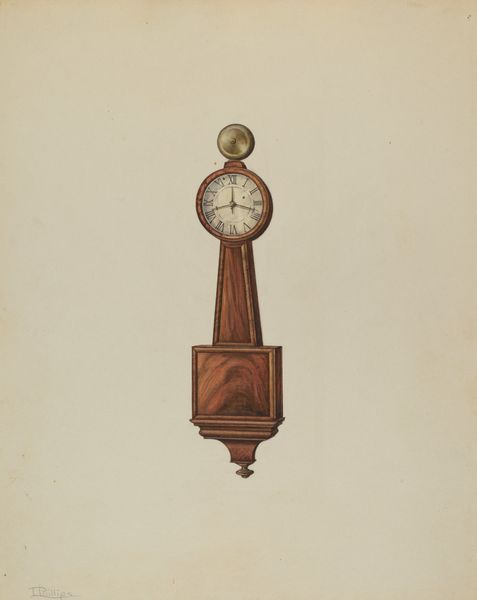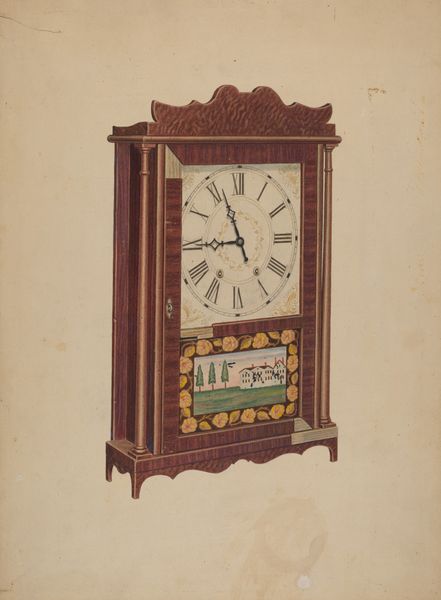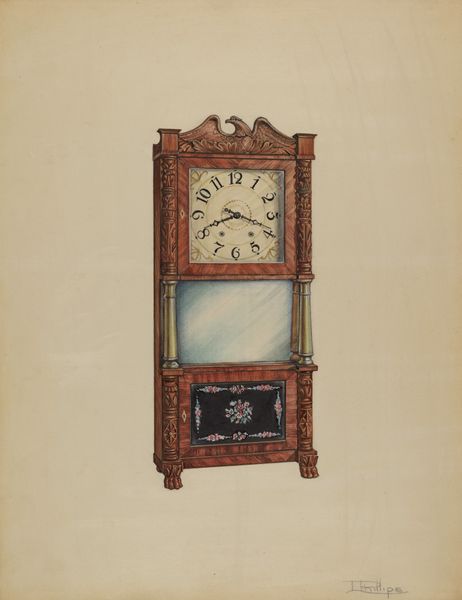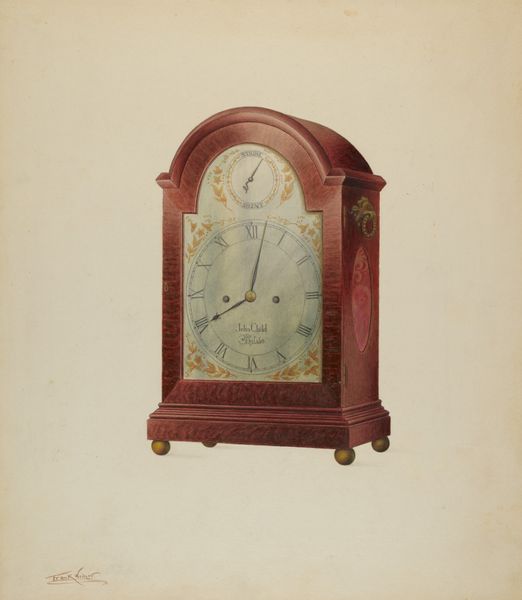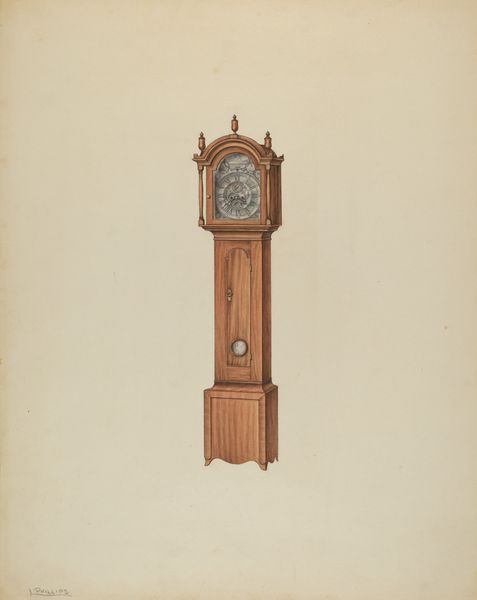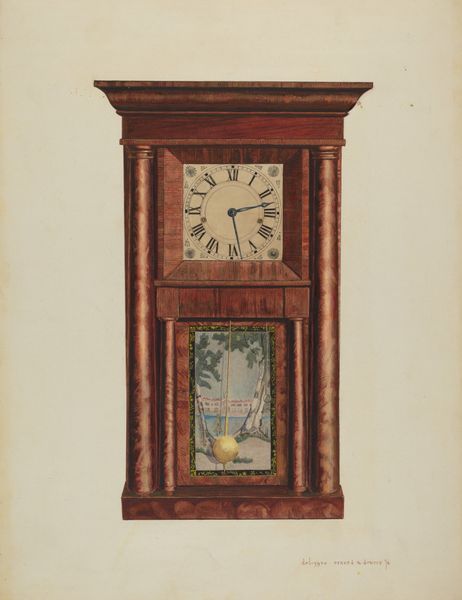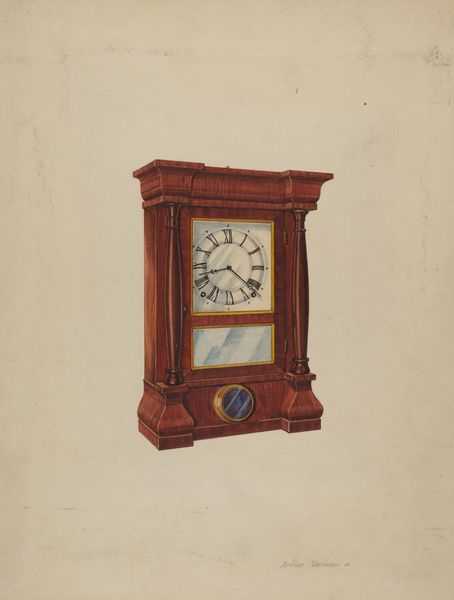
drawing, watercolor
#
drawing
#
water colours
#
watercolor
#
watercolour illustration
#
decorative-art
#
modernism
Dimensions: overall: 30.5 x 24.7 cm (12 x 9 3/4 in.) Original IAD Object: 25"high x 15"wide
Copyright: National Gallery of Art: CC0 1.0
Curator: Standing before us is "Mantle Clock," a watercolor on paper created around 1937 by Lon Cronk. Editor: My first impression is one of antiquated elegance. The clock face seems suspended, timeless, almost ethereal in its presentation. Curator: Absolutely. This work straddles decorative art and early modernist design. The technique here is very precise watercoloring. Note the marbling effect Cronk painstakingly recreated on the wood surfaces, a testament to craft skill and industrial mimicry. Editor: And those columns flanking the clock face! They immediately bring to mind classical architecture, suggesting the weight of history and tradition. The golden color contrasts with the wood grain to make it read as symbolic rather than literal support. What would this clock symbolize within the context of a 1930s home? Curator: Well, in the context of the Depression era, such a design probably evokes the notion of status and aspirational consumption. Despite the financial hardships of the time, such commodities remained aspirational, markers of a desired social mobility. Editor: But the clock *lacks* hands, an uncanny suggestion. Could it point to the anxieties of that era, a paralysis in the face of vast social and economic challenges? Maybe an illustration intended for industry design concepts of decorative objects also signals a deeper comment? Curator: It’s a definite possibility. We could argue that this missing detail forces us to consider how commodities interact with, and sometimes even distort, our experience of time. Are we masters of time or are we enslaved by its regimented march toward industrial productivity? The use of watercolor is not innocuous: its delicate, transient quality underscores the precariousness of material aspirations during a tumultuous period. Editor: So, an emblem of aspiration rendered in ephemeral pigments... that speaks volumes about our relationship to material objects, then and now. Curator: Indeed. Cronk gives us more than meets the eye. By studying production, by considering that it is meant to decorate, this otherwise simple design provides insight on broader anxieties about social status, economics, and industrial manufacturing. Editor: For me, the real fascination lies in Cronk using symbolic imagery – absence of hands, for instance -- that taps into our cultural memory and individual psyches regarding wealth and social-economical states. Curator: Ultimately, both perspectives enrich our understanding of the Mantle Clock, recognizing the object’s capacity to reveal deeper stories about its own making and symbolic language.
Comments
No comments
Be the first to comment and join the conversation on the ultimate creative platform.
